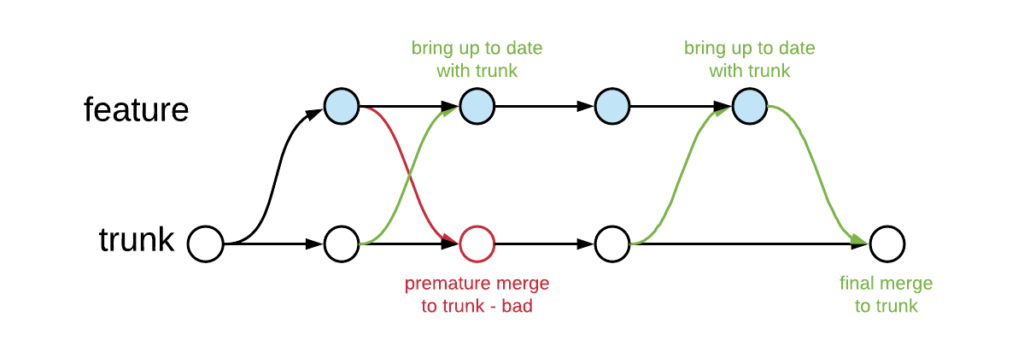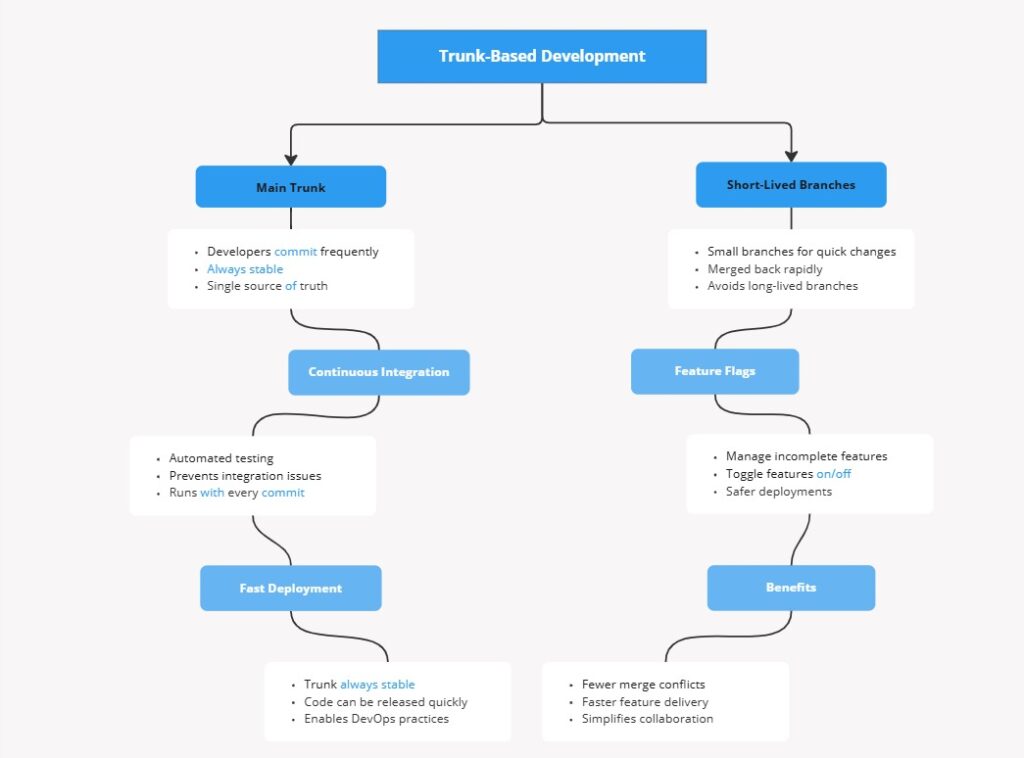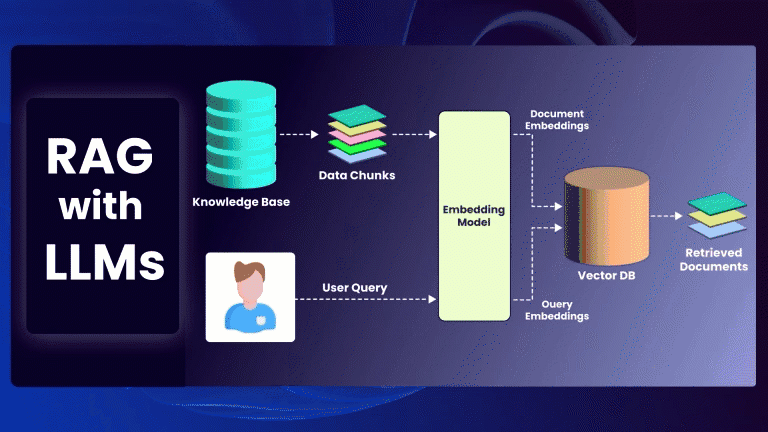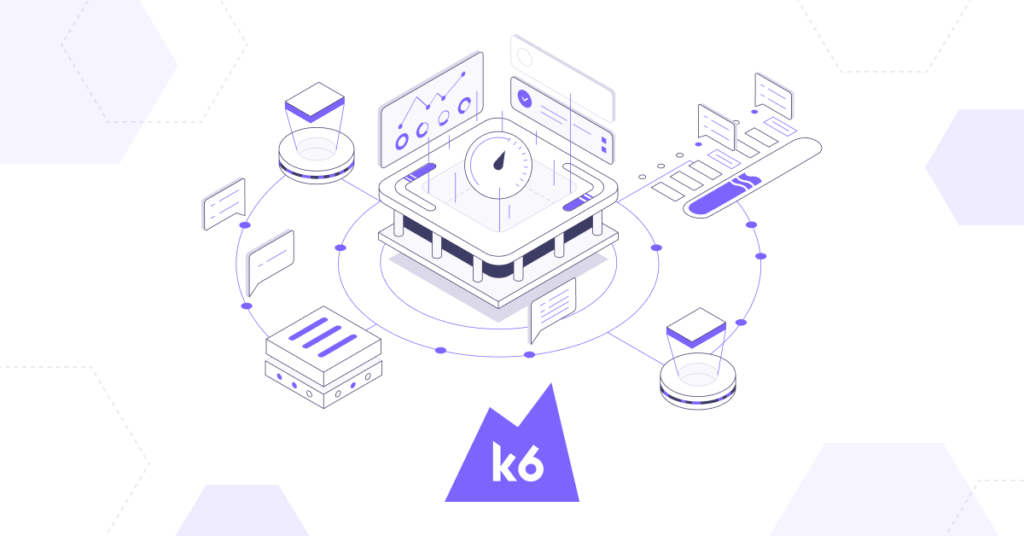Recently research on this topic and I discovered how crucial an efficient Git branching is for software development. In a recent session at company, my senior introduced Trunk-Based Development (TBD) and explained its impact on agile workflows. He strongly recommended adopting TBD to eliminate merge conflicts, accelerate software delivery, and improve team collaboration.

1. What is Trunk-Based Development (TBD)?
Trunk-Based Development is a Git branching strategy where developers frequently commit directly to the trunk (main branch) instead of using long-lived feature branches.
Unlike traditional workflows like Git Flow, where developers create separate branches for features, releases, and hotfixes, TBD ensures continuous integration (CI) by keeping changes small, frequent, and deployable.
Key Features of TBD:
✅ Frequent commits to the main branch
✅ Short-lived feature branches (if needed)
✅ Automated testing and CI/CD pipelines
✅ Feature flags for safe deployments
✅ Pair programming and rigorous code reviews
2. Trunk-Based Development vs Feature Branching
| Feature | Trunk-Based Development | Feature Branching |
|---|---|---|
| Merge Conflicts | Minimal due to frequent integration | High due to long-lived branches |
| Code Integration | Continuous | Delayed until feature completion |
| CI/CD Compatibility | Highly compatible | Often causes pipeline failures |
| Release Cycle | Faster, small incremental updates | Slower due to delayed merges |
| Risk of Bugs | Low, as code is tested frequently | High, as large changes are merged at once |
Why TBD is Better:
🔥 No more complex merge conflicts
🔥 Faster releases with fewer bottlenecks
🔥 Stronger collaboration and code quality
3. Top 5 Benefits of Trunk-Based Development
1️⃣ Faster Software Releases 🚀
With TBD, teams continuously integrate and deploy small changes, allowing frequent software releases instead of waiting for a massive feature branch to be merged.
2️⃣ Avoid Merge Conflicts 🛠
Traditional feature branching often leads to painful merge conflicts. Since TBD promotes smaller, frequent commits, these conflicts are minimized.
3️⃣ Improved Code Quality 🏆
Automated testing and peer reviews before merging, ensuring high-quality code that’s always in a deployable state.
4️⃣ Better Team Collaboration 🤝
Developers work on the same branch, reducing isolated work and ensuring that the team is always aligned with the latest codebase.
5️⃣ Works with CI/CD 🏗
DevOps practices rely on Continuous Integration (CI) and Continuous Deployment (CD). TBD normally supports CI/CD by keeping the main branch clean and deployable at all times.
4. How to Change to Trunk-Based Development
As my perspective and suggestion, If your team is currently using feature branching, switching to Trunk based development requires a structured approach:
- Step 1: Implement Feature Flags
- Instead of keeping incomplete features in a separate branch, use feature flags to hide them in production.
- Step 2: Automate Testing with CI/CD
- Every commit should pass automated tests before merging into the trunk.
- Step 3: Use Short-Lived Feature Branches (If Needed)
- If a separate branch is necessary, merge it within 1-2 days to avoid code drift.
- Step 4: Encourage Small, Frequent Commits
- Developers should commit frequently to keep the main branch stable.
- Step 5: Code Reviews
- Conduct quick, regular reviews to maintain quality.

5. The Problem with Feature Branching
- ❌ Integration delays due to long-lived branches
- ❌ Complex merge conflicts when multiple developers work on the same codebase
- ❌ Slower release cycles because of late-stage integration issues
When developers work on separate branches for long periods, integrating them into the main branch becomes challenging and time-consuming. This leads to last-minute code conflicts, failed tests, and even deployment failures.
Example of Feature Branching Issues
Just imagine a team of 10 developers working on different features. Each developer works on their feature branch for 2-3 weeks. When they finally merge, they face massive merge conflicts because:
➡️ Their branch is outdated compared to the main branch
➡️ Other developers made changes in the same files
➡️ Fixing conflicts requires hours or even days
This is why software teams are moving towards Trunk-Based Development.
6. How Trunk-Based Development Solves These Issues
Trunk-Based Development (TBD) is a Git branching strategy where developers commit directly to the trunk (main branch) instead of working on long-lived feature branches.
This method promotes:
✅ Continuous integration (CI) with small, frequent commits
✅ Faster feedback loops for better code quality
✅ Simpler merges, reducing deployment risks
Reference Sites
https://trunkbaseddevelopment.com
https://www.travis-ci.com/blog/explaining-trunk-based-development
https://www.getunleash.io/blog/how-to-implement-trunk-based-development-a-practical-guide







Nice article amman. Very insightful
Loved the breakdown-great insights on betting strategies! If you’re looking for a thrilling gaming experience, check out PH987 jili for some top-tier action and bonuses.